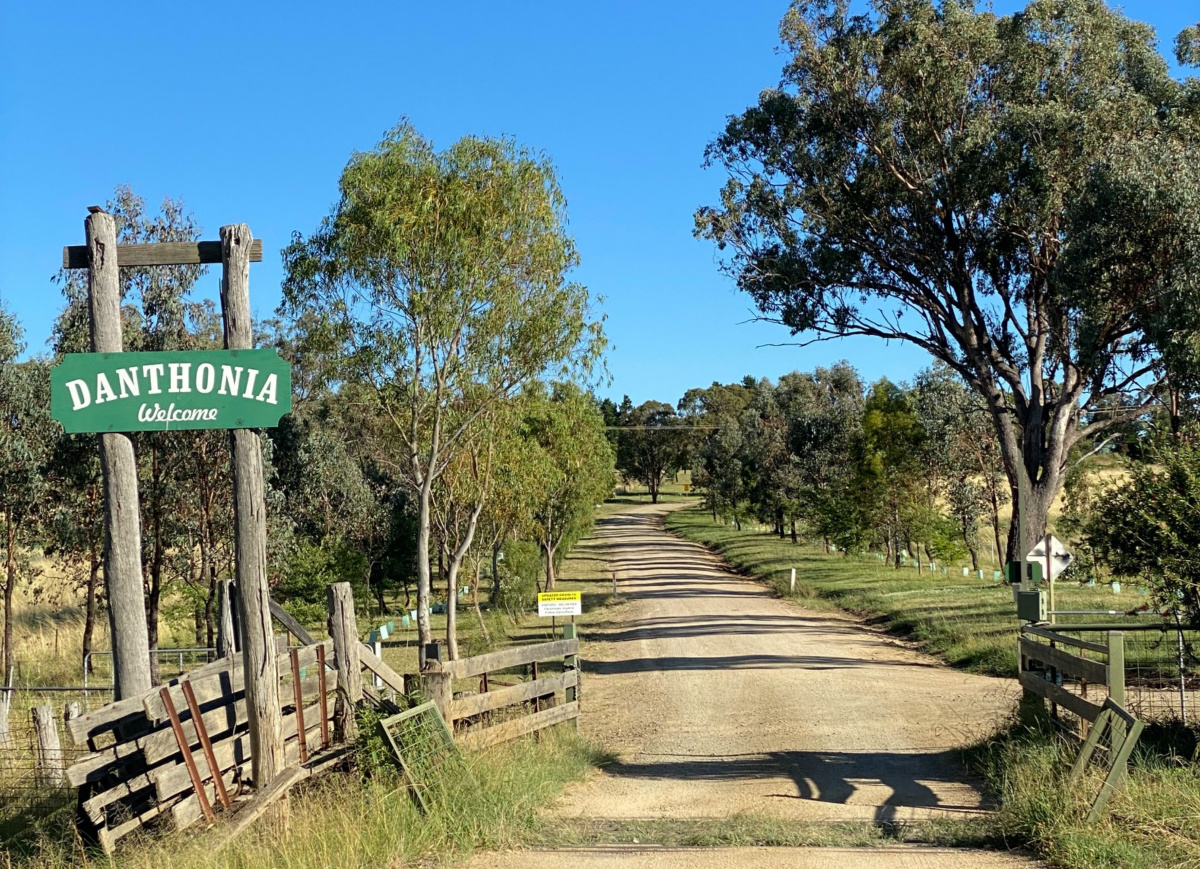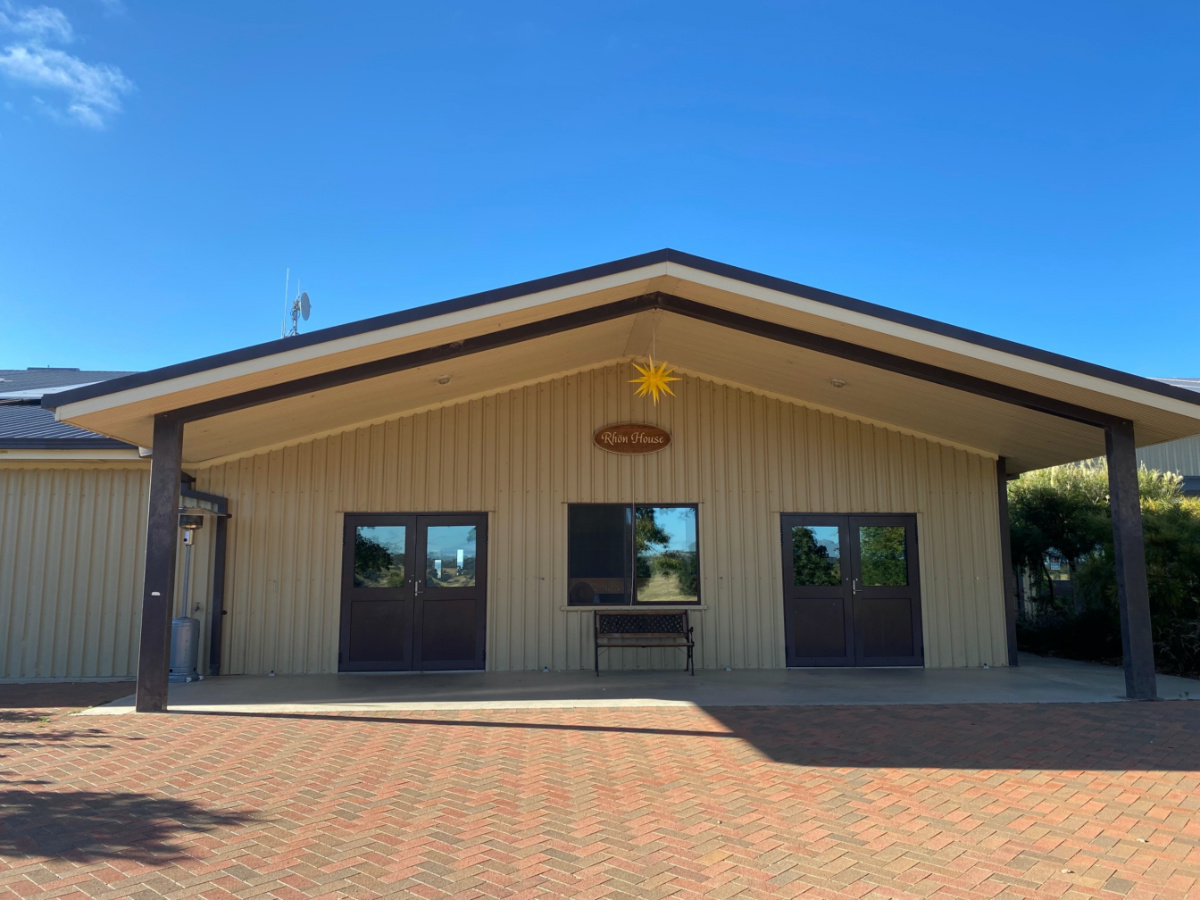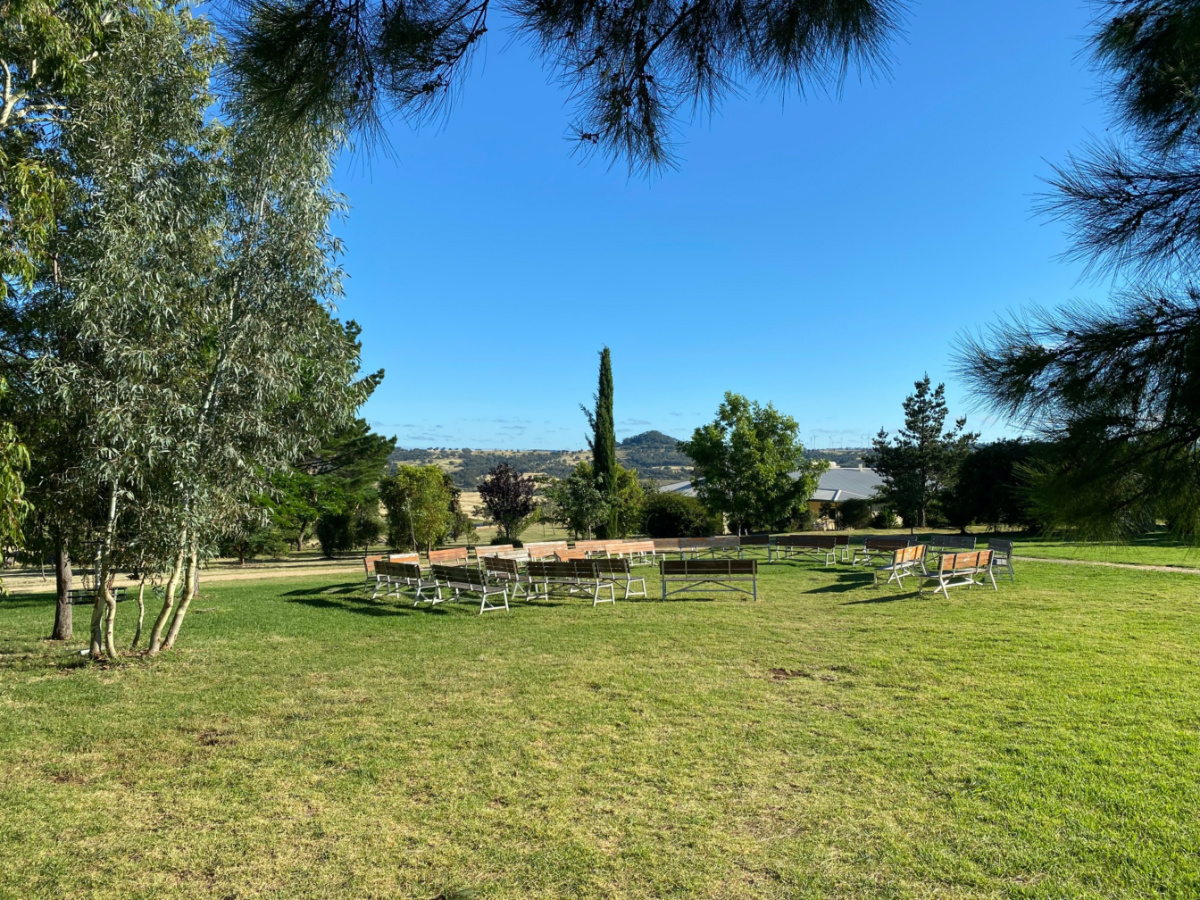
NILS VON KALM reflects on his recent sojourn among the Bruderhof community in northern New South Wales, Australia…
Melbourne, Australia
Early in January, I made my way up to northern NSW to spend a week with the Bruderhof, an intentional Christian community who seek to live like the first Christians.
The idea of living in community has attracted me for the last decade or so. As social, relational creatures, it just makes sense that humans support each other to ensure that all people, particularly the most vulnerable, can feel safe and secure, free to live a flourishing life.

The gateway to ‘Danthonia’ in northern New South Wales. PICTURE: Nils von Kalm
As their website states, “the Bruderhof was founded in 1920 in Germany by the Protestant theologian Eberhard Arnold, his wife Emmy, and her sister Else von Hollander. Seeking answers to the devastation of post-war society and frustrated by the silence of the established church in the face of widespread chaos, they left Berlin and moved to the remote village of Sannerz. There, inspired by the example of the first Christians in Jerusalem, they started a community with a small group of fellow Christians.”
There is also a strong emphasis on the nuclear family, though there are many single people among them. Most communities have a nursery, kindergarten, school, communal kitchen, laundry, various workshops, and offices.
“The idea of living in community has attracted me for the last decade or so. As social, relational creatures, it just makes sense that humans support each other to ensure that all people, particularly the most vulnerable, can feel safe and secure, free to live a flourishing life.”
Children are prioritised as an important part of the communal life and participate in most communal gatherings. It was beautiful seeing the smiling, friendly faces of the children going about their days with joyful abandon, just being allowed to be children, playing, going to school, and without a care in the world. Disabled and elderly members are also cared for within the community and participate in daily life and work as much as they are able to.
Having Anabaptist roots, the Bruderhof practises believer’s baptism, non-violence and peacemaking, the proclamation of the Gospel, and lifelong faithfulness in marriage. All of this is in addition to the common life they all share.
There are currently 26 Bruderhof communities worldwide, with the majority being in the eastern United States, and others in the UK, Germany, Austria, Paraguay and Australia.
The inspiration for how they live ultimately comes from Acts chapters two and four where the first believers decided to live together and have all things in common. No-one claimed private ownership of any possessions. They would sell their possessions and distribute the proceeds to everyone, as any had need. As a result, there wasn’t a needy person among them. They also ate together, and exuded such joy that their way of life added people to their community daily.
We rely on our readers to fund Sight's work - become a financial supporter today!
For more information, head to our Subscriber's page.
In our individualistic, consumerist society, such a lifestyle seems totally radical, but for the first Christians and the Bruderhof, seeking to emulate their Master Jesus, such a lifestyle is normal.
The Bruderhof’s Australian community, Danthonia (named for a prized grass by the soldier-settler family who developed the farm in the 1950s), is situated on approximately 5,000 acres near Inverell in northern NSW. One of the first things that struck me about it is that they are almost completely self-sustaining in terms of food production. They have their own cattle, goats, chickens, and grow crops such as corn, capsicum and tomatoes, among many other vegetables, all to feed the approximately 200 people in their community. The community derives a collective income (no one earns a salary) through the Danthonia Designs sign business.

One of the buildings at Danthonia. PICTURE: Nils von Kalm
My intention on visiting the Bruderhof was to immerse myself into their life as much as I could. I didn’t want to just be a tourist.
The hospitality of the Bruderhof is another aspect that stood out to me. Pre-COVID, they would welcome hundreds of visitors each year. During my week there, I ate every day with either a family or as part of the whole communal gathering, where all of the community eat lunch together almost daily.
Singing is also a major part of the communal life, and the evenings spent sitting outside with everyone, looking over the vast rolling hills, singing worship songs, is a memory that will stay with me for a very long time.
Daily life starts early at Bruderhof communities. After breakfast at home, most people head to work by 7:30am. Enroute to work, families take any washing to the communal laundry, and then drop off their children at the community’s daycare or school (all the children are home-schooled).
Work is divided according to where the need is. Most days, I would spend the mornings maintaining crops. That would involve activities such as pulling up used corn stalks, hammering in stakes for the growing of capsicums, or planting seeds to grow tomatoes.
In the afternoon I was generally asked to work in the sign shop, which would mostly involve painting signs which would eventually be shipped to anywhere in Australia or overseas.
During the week I was able to have numerous conversations about what communal life meant for these fine people, and the benefits they gained from it. I also learned much about the history of the Bruderhof movement, from their fledgling days in Germany when they were eventually forced to flee Nazi persecution for their refusal to serve under Hitler, to their expansion in the United Kingdom, Paraguay, the US and then Australia.
The difference from Bruderhof life to mine was striking. I have lived in middle-class Melbourne all my life, in an individualistic, capitalist society where you need a job to earn enough money to live comfortably, and you hope that you don’t lose your job, or that, if you do, that there are enough supports in your life to get you by. In the society I live in, mental health issues are prominent, with loneliness a major problem, especially in the last two years with the isolation brought on by COVID-19.
In comparison, the Bruderhof lifestyle is a light on a hill. Throughout the week, I was reminded of Jesus’ words in the Sermon on the Mount about not hiding a city on a hill (Matthew 5:15-16).
This is the life the Bruderhof attempt to live. They are an alternative community, a light on a hill. I see their life as a statement of a better way to live than the individualistic and lonely life of the modern West. In the Bruderhof there is little loneliness, and although there are people there who suffer with depression, mental health problems are very few, and everyone feels safe and secure. Isn’t that more life-giving than our belief that existence consists in the abundance of possessions (Luke 12:15)?
This does not mean that they live in some sort of holy Christian bubble. They have been accused in the past of being cultish, though I find this to be an unfair accusation. They have strong links with the local community, including the local Indigenous people and many farmers, who visit them to find out more about the eco-friendly farming methods they use.

Chairs set up on the property near Inverell in northern New South Wales. PICTURE: Nils von Kalm.
Anyone wanting to live with the Bruderhof is welcome to, although it is strongly encouraged that people have a strong sense of calling to do so. As discussed in their document, Foundations of our Faith and Calling, the Bruderhof keeps an open door. Internationally, their communities welcome hundreds of guests and visitors each year. People are free to request to become members, but the lifetime commitment means a genuine calling to church community is needed, and this must be well-tested over time.
When you join the Bruderhof, you take vows (similar to those of traditional religious orders) of personal poverty, chastity and obedience. This means you voluntarily give up private possessions and money, and the life you knew beforehand. The gains are community, togetherness and a sense of living together as Christians with a distinct purpose.
In many ways, the Bruderhof live a very radical Christian faith. Their Anabaptist roots come out of the ‘Radical Reformation’, which not many Christians seem to be aware of and which followed the more well-known Reformation instigated by Martin Luther in the 16th century.
Their radical faith is expressed in their desire to live out the Sermon on the Mount, with its emphasis on non-violence, peacemaking and justice for all. It is also accentuated by their belief in lifelong marriage between a man and a woman and what many would see as traditional gender roles for men and women.
The latter is where they are often seen as quite conservative. The majority of the women wear head scarves, as well as skirts down to their ankles, and the men wear plain shirts and jeans, all provided by the community. The emphasis is on modesty and internal character as what makes us human, rather than externals like fashion and an emphasis on appearance.
I experienced a number of different feelings during my week with the Bruderhof. As I had done a lot of research prior to my visit, my expectations were met. Nothing quite prepares you however for the actual experience. For this city-dweller, the early starts to the day, and the farm work, certainly took their physical toll. Maybe I have worked in an office for too long!
The Bruderhof are one of the few intentional communities in the world that have survived long-term. Their emphasis on living for Christ above all, even above community, is their strength. Thinking back over my time there, I would love to go back and explore further what it means to live what might just be something closer to the truly Christian life, the more human life where relationship is prioritised over material gain, and the love of Christ over the profit motive. It is an impressive life indeed.





